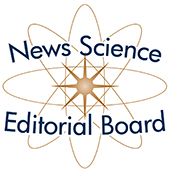Science News: Natural History of Facioscapulohumeral Dystrophy in Children: A 2-Year Follow-Up
Published April 18, 2022
Education Science News
 Submitted by: Niranjan N. Singh, MD, DM
Submitted by: Niranjan N. Singh, MD, DM
Edited by: Sarah Chen, MD
Dijkstra JN, Goselink RJM, van Alfen N, et al. Natural history of facioscapulohumeral dystrophy in children: A 2-year follow-up. Neurology. 2021; 97(21):e2103-e2113
Summary: This study describes the disease course of facioscapulohumeral dystrophy (FSHD) in children from the Netherlands. The study included 20 children with genetically confirmed FSHD between 2-17 years of age. Disease was slowly progressive, but the rate of progression was highly variable. At baseline, 16 of 20 symptomatic children had facial weakness; after 2 years, 19 of 20 had facial weakness. In 2 years, other muscle weakness did not change between baseline and follow-up. The most frequently and most severely affected muscles were the trapezius and deltoid. Systemic features such as vision loss, epilepsy, intellectual disability, and cardiac abnormalities were absent or rare. Hearing loss, retinal abnormalities, dysarthria, and swallowing difficulties were observed in less than 50% patients and often non progressive. Pain and fatigue were common.
Comments: FSHD is a slowly progressive muscular dystrophy, and one of the most common hereditary muscle diseases with estimated prevalence of 12/100 1000 in the Netherlands.
FSHD typically presents with progressive, asymmetric weakness of facial, scapulohumeral, tibial, and axial muscles. Type 1 is responsible for 95% of cases with- D4Z4 mutation.
This is a small 2-year follow-up study of genetically confirmed FSHD cases from the Netherlands. On clinical examination, facial weakness was observed as a sign of progression. FSHD clinical score 0-15 and muscle ultrasound Z score appeared to be most promising outcome measures of progression. Despite disease progression, children may still notice improvement in functional capacity, including the 6 minute walk test. Pain, fatigue, and decreased quality of life were common symptoms during follow-up.
Articles of Similar Interest:
Goselink R, Schreuder T, van Alfen N, et al. Facioscapulohumeral dystrophy in childhood: A nationwide natural history study. Annals of neurology. 84(5), 627–637.
Goselink, R., Mul, K., van Kernebeek, C. R., et al. Early onset as a marker for disease severity in facioscapulohumeral muscular dystrophy. Neurology, 92(4), e378–e385.
